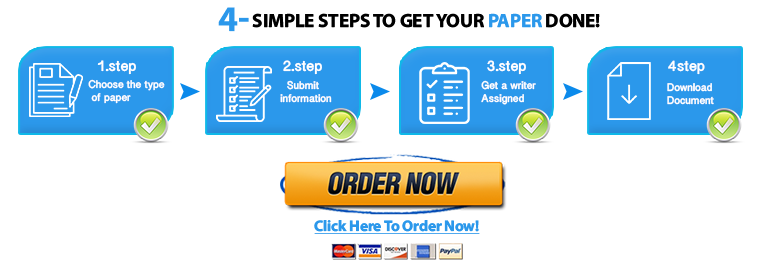In this task you will begin the prototype stage in which you will create a storyboard that communicates the intended instructional design strategy and content for a one-hour e-learning module.
INTRODUCTION
The performance assessments in the Learning Experience Design (LXD) Foundations I and II courses cover the five stages of design thinking: empathize, define, ideate, prototype, and test. In this task you will begin the prototype stage in which you will create a storyboard that communicates the intended instructional design strategy and content for a one-hour e-learning module.
In LXD Foundations I, you chose one of the case studies, found in the Web Links section, to guide your work. The same case study will be used throughout this course (LXD Foundations II). It is important to note that these case studies are designed to provide sample instructional scenarios. In an authentic design thinking project, the information presented would normally be obtained by gathering data and perspectives in your instructional setting directly from the target learners and from other team members, stakeholders, and subject matter experts. All three case studies can be found in the Web Links section of this task for easy reference.
For this task, you will refine your idea from your ideation work in Task 1 of LXD Foundations II and use that idea to build your first prototype—a storyboard for your one-hour e-learning module. Your storyboard will be evaluated on several factors, some of which should be evident in the storyboard itself, while others will need to be explained. This storyboard will be used to build a mock-up in Task 3.
REQUIREMENTS
Your submission must represent your original work and understanding of the course material. Most performance assessment submissions are automatically scanned through the WGU similarity checker. Students are strongly encouraged to wait for the similarity report to generate after uploading their work and then review it to ensure Academic Authenticity guidelines are met before submitting the file for evaluation. See Understanding Similarity Reports for more information.
Grammarly Note:
Professional Communication will be automatically assessed through Grammarly for Education in most performance assessments before a student submits work for evaluation. Students are strongly encouraged to review the Grammarly for Education feedback prior to submitting work for evaluation, as the overall submission will not pass without this aspect passing. See Use Grammarly for Education Effectively for more information.
Microsoft Files Note:
Write your paper in Microsoft Word (.doc or .docx) unless another Microsoft product, or pdf, is specified in the task directions. Tasks may notbe submitted as cloud links, such as links to Google Docs, Google Slides, OneDrive, etc. All supporting documentation, such as screenshots and proof of experience, should be collected in a pdf file and submitted separately from the main file. For more information, please see Computer System and Technology Requirements.
You must use the rubric to direct the creation of your submission because it provides detailed criteria that will be used to evaluate your work. Each requirement below may be evaluated by more than one rubric aspect. The rubric aspect titles may contain hyperlinks to relevant portions of the course.
- Include the following sections of your passing submissions from previous tasks to provide context for your identified instructional problem and learner population:
- the target audience analysis and the learning goal from Task 2, parts A1 and B (LXD Foundations I)
- the learning objective and the previously passed idea for an e-learning module from Task I, parts C1–C3 (LXD Foundations II)
Note: The tasks in LXD Foundations I and LXD Foundations II are designed to be completed in order, using the same case study throughout, to simulate the design thinking process from start to finish.
Part I: Refining an E-Learning Solution
- Refine the solution you ideated and described in Task 1 so the idea can be delivered in a one-hour e- learning module that addresses the learning objective in part A by doing the following:
- Describe how you could refine your e-learning solution to incorporate each of the three UDL principles (i.e., engagement, representation, and action and expression).
- Describe how learning could be measured as learners work toward the achievement of the learning objective in part A.
- Explain how a specific instructional strategy will guide the design of the storyboard to support the learners’ needs identified in the learner analysis in part
- Explain how you will organize the content in the storyboard to support the target learners’ achievement of the learning objective in part A.
Part II: Storyboard Prototype
- Create an original storyboard (e.g., visual or narrative) within a self-selected storyboard template of the one-hour e-learning module (suggested length of 6–10 slides/screens) you refined in part Your storyboard should do the following:
- Represent the following elements:
- a descriptive title
- introduction to the content
- 2–4 content pages
- summary of content (i.e., key takeaways of learning)
- assessment (i.e., formative and/or summative measure of learning)
Note: The storyboard should represent a one-hour e-learning module; it will likely require more content than the listed bulleted elements, but it must include representations of the bulleted elements at a minimum.
- Organize the content in the storyboard to scaffold toward achievement of the learning objective using the identified instructional strategy in part
- Conceptually represent the text, visuals, audio, and interactions you will use to address the learning objective and learner needs in the storyboard prototype.
Note: For part C3, the text, visuals, audio, and interactions are placeholders. They are not intended to be the content that will be in your final e-learning solution. Placeholders may provide a general detail about a concept or topic, but they do not need to contain details of specific content.
- Acknowledge sources, using in-text citations and references, for content that is quoted, paraphrased, or
- Demonstrate professional communication in the content and presentation of your
File Restrictions
File name may contain only letters, numbers, spaces, and these symbols: ! – _ . * ‘ ( ) File size limit: 200 MB
File types allowed: doc, docx, rtf, xls, xlsx, ppt, pptx, odt, pdf, csv, txt, qt, mov, mpg, avi, mp3, wav, mp4, wma, flv, asf, mpeg, wmv, m4v, svg, tif, tiff, jpeg, jpg, gif, png, zip, rar, tar, 7z
RUBRIC
DISPOSITIONS:
NOT EVIDENT
The submission demonstrates both behavior and disposition that conflict with professional or ethical standards.
APPROACHING COMPETENCE
The submission demonstrates behavior or disposition that conflicts with professional or ethical standards.
COMPETENT
The submission demonstrates behavior and disposition that align with professional and ethi- cal standards.
A: CONTEXTUAL INFORMATION
NOT EVIDENT
1 or more of the given sections from LXD Foundations I and LXD Foundations II are missing or incomplete.
APPROACHING COMPETENCE
Not applicable.
COMPETENT
All given sections from both LXD Foundations I and II are provided.
B1: UDL PRINCIPLES
NOT EVIDENT
The submission does not in- clude a description.
APPROACHING COMPETENCE
The submission does not logi- cally describe how the e-learn- ing solution could be refined to incorporate UDL principles. Or 1 or more UDL principles are not addressed.
COMPETENT
The submission logically de- scribes how the e-learning solution could be refined to incorpo- rate each of the 3 UDL principles.
B2: MEASUREMENT OF LEARNING
NOT EVIDENT
The submission does not pro- vide a description.
APPROACHING COMPETENCE
The submission describes how learning could be measured as learners work toward the achievement of the learning objective, but the method of measurement is inappropriate for the target learners, the learning objective, or for the e- learning module.
COMPETENT
The submission describes how learning could be measured as learners work toward the achievement of the learning ob- jective, and the method of mea- surement is appropriate for the target learners, the learning ob- jective, and for the e-learning module.
B3: INSTRUCTIONAL STRATEGY AND LEARNERS’ NEEDS
NOT EVIDENT
The submission does not pro- vide an explanation.
APPROACHING COMPETENCE
The submission does not logi- cally explain how a specific in- structional strategy will guide the design of the storyboard to support the targeted learners’ needs. Or the strategy is not specifically identified.
COMPETENT
The submission logically ex- plains how a specific instruc- tional strategy will guide the de- sign of the storyboard to sup- port the targeted learners’ needs.
B4: STORYBOARD ORGANIZATION
NOT EVIDENT
The submission does not in- clude an explanation.
APPROACHING COMPETENCE
The submission explains how the content in the storyboard will be organized, but the ex- planation is illogical or does not include how the organization will support target learners’ achievement of the learning objective.
COMPETENT
The submission logically ex- plains how the content in the storyboard will be organized to support the target learners’ achievement of the learning objective.
C1: STORYBOARD ELEMENTS
NOT EVIDENT
The storyboard does not repre- sent any of the given elements.
APPROACHING COMPETENCE
The storyboard is missing 1 or more of the given elements. Or 1 or more of the given ele- ments are incomplete.
COMPETENT
The storyboard includes com- plete representations of all the given elements.
C2: CONTENT ORGANIZATION
NOT EVIDENT
The content in the storyboard is not organized.
APPROACHING COMPETENCE
The content in the storyboard is organized, but it does not scaffold toward the learning objective. Or it does not use the identified instructional strategy in part B3.
COMPETENT
The content in the storyboard is organized in a way that scaf- folds toward the learning objec- tive using the identified instruc- tional strategy in part B3.
C3: CONCEPTUAL REPRESENTATION
NOT EVIDENT
The storyboard does not con- ceptually represent the text, vi- suals, audio, and interactions.
APPROACHING COMPETENCE
The storyboard conceptually represents the text, visuals, au- dio, and interactions, but the storyboard demonstrates an incomplete or illogical align- ment with the learning objec- tive or learner needs.
COMPETENT
The storyboard conceptually represents the text, visuals, au- dio, and interactions and demonstrates a thorough and logical alignment with the learn- ing objective and learner needs.
D: SOURCES
NOT EVIDENT
The submission does not in- clude both in-text citations and a reference list for sources that are quoted, paraphrased, or summarized.
APPROACHING COMPETENCE
The submission includes in-text citations for sources that are quoted, paraphrased, or sum- marized and a reference list; however, the citations and/or reference list is incomplete or inaccurate.
COMPETENT
The submission includes in-text citations for sources that are properly quoted, paraphrased, or summarized and a reference list that accurately identifies the author, date, title, and source lo- cation as available.
| NOT EVIDENT
This submission includes per- vasive errors in professional communication related to grammar, sentence fluency, contextual spelling, or punctu- ation, negatively impacting the professional quality and clarity of the writing. Specific errors have been identified by Grammarly for Education un- der the Correctness category. |
APPROACHING COMPETENCE
This submission includes sub- stantial errors in professional communication related to grammar, sentence fluency, contextual spelling, or punctu- ation. Specific errors have been identified by Grammarly for Education under the Correctness category. |
COMPETENT
This submission includes satis- factory use of grammar, sen- tence fluency, contextual spell- ing, and punctuation, which pro- mote accurate interpretation and understanding. |
WEB LINKS
Higher Education Case Study K–12 Case Study
Need help with a similar assignment? Our experts can write a 100% original version for you
 Chat Directly with Us on WhatsApp
Chat Directly with Us on WhatsApp

I am a professional nursing assignment expert offering comprehensive academic support to university nursing students across various institutions. My services are designed to help learners manage their workload effectively while maintaining academic excellence. With years of experience in nursing research, case study writing, and evidence-based reporting, I ensure every paper is original, well-researched, and aligned with current academic standards.
My goal is to provide dependable academic assistance that enables students to focus on practical training and career growth.
Contact me today to receive expert guidance and timely, high-quality nursing assignment help tailored to your academic needs.



 Chat Directly with Us on WhatsApp
Chat Directly with Us on WhatsApp